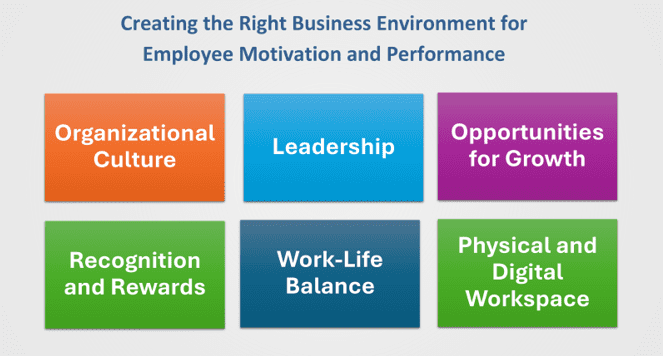Leadership can entail a substantial amount of pressure. The pressure to do well. The pressure to ensure your team is meeting deadlines. Most of all, the pressure to maintain calm and collected in the face of any obstacle you and your team face. These factors call for are typical of any leader in a physical workplace setting. However, how can any leader achieve this when they’re working remotely and managing remote teams?
At eHotelier, education and knowledge sharing have always been the primary objective for our team. A great part of driving the success towards that goal is the leadership that keeps our team focused, informed, and growing.
Being successful in managing remote teams means knowing what tools are available and how you can enable your team. Below are some tips we have created on how you can lead your team, anywhere, and anytime.
March 18th, 2020: We know the coronavirus COVID-19 could be impacting your team’s ability to work in-office. This guide is also a great way to make a temporary transition to remote with your team. If you need a better way to shift your team to working remotely, we’re offering a basic plan. Message our team to find out how to get started training your team for the online space.
The tools for managing remote teams
Before you can manage your team, you need to make sure everyone (including yourself) has access to the right tools. These include:
- A computer (company provided or personal).
- Software to communicate and manage their work (more on this in a bit).
- A webcam, internet access (mobile phone cams can work in a pinch).
- Any industry-specific tools needed to perform their roles.
This isn’t a perfect list for every team and leader, but it’s a great place to start. For our online training platform, we created a guide for the best tools for working remotely. Check it out if you want a
Have everyone check to make sure they’re set up, everything works, and they have good network connections. If you want to go a step further (and make your IT team happy) explore providing a VPN option. Though home networks are more secure than cafes, the protection of VPN’s makes sure that company information stays secure.
Making sure your team is enabled can also mean training them to transition to remote work. If this is the case, consider an online training platform that lets you seamlessly shift your training content online. All-in-one platforms offer engaging learning tools that can help teams scale the transition to remote work.
Set clear goals for the company, team, and individual roles
Managing remote teams with various tasks, in different teams, for different company outcomes can get confusing. Creating clearly defined intentions and responsibilities for every member of your remote team is essential to efficiency and success. This also prevents confusion and delays that are difficult to overcome when your team is spread across time zones.
This study by the Harvard Business Review discusses the importance of clarity to remove friction from a team’s processes. Making sure individuals understand what their role needs to do can affect a team’s productivity. This can be done by creating clear remote task orientation and visibility. If your team has insight on what they should do, they’ll be able to act autonomously while working remote.
Applications like Trello, Jira, or Asana offer insight into what teams and individuals are doing at a given time. What’s great about any of these is that you can assign tasks, show project completion, and review team progress. They all offer the flexibility of being accessible to a variety of remote work setups (ie. web or mobile-friendly). Managing remote teams is a whole lot easier when everyone is on the same page for their respective goals.
How to communicate when working remotely
The best way to ensure smooth sailing in any virtual office environment is to create an effective communication process. This means utilizing group instant messaging platforms like Slack to organize channels of conversation. This also means leveraging video conferencing software like Zoom and Google Meet to get face-to-face time with everyone.
The point is, you have to make sure your team is talking with each other. It’s what happens every day in a physical office setting—it makes sense a virtual one needs the connection just as much. Even if you just have a general channel where your team can ask questions, you’ll see their morale boost. Managing remote teams is more than managing—it’s providing the space needed for your team to grow stronger together.
Being present and communication are vital to leading remote teams. You don’t have to be available 24/7, but being present in your channels makes a difference. The benefits of being present include:
- Preventing confusion from happening before it starts.
- Promoting a sense of autonomy with each team member.
- Being able to put out fires or direct them to the right team member.
- Creating transparency between everyone’s day-to-day.
- Making sure everyone feels recognized and heard.

The team that’s talking more means everyone is aligned as one. The moment you think a team member feels isolated, reach out to them. Sometimes they’re simply busy but recognizing the difference between busy and lonely can improve a person’s day. And if you’re there to support your team when they need you, they’re sure to return that investment tenfold.
Our last piece of advice on communication is coordinating consistent check-ins as a group and as individuals. If you have a leadership team managing departments, schedule a chat with them and their teams. Have them schedule regular one-on-one chats with each team member. If remote teams can count on communication to happen, they’ll feel more connected as one team working together.
The etiquette for managing remote teams
Leading your team means also making sure you’re taking time for yourself. Forbes contributor Mike Robbins makes an airplane reference in his article on remote leadership. “You have to make sure your mask is on before securing someone else’s.” Being a leader means being an example of what you expect from your team.
As a leader, your biggest concern is making sure everyone stays on task. That also means taking the time for yourself to recharge and measure everything going on with the company. If you give company-wide updates, think about the impact of your message. If the captain of the ship looks worried, how does that look for the team?
We also encourage you to try offering social activities for your team. Virtual happy hours or a regular virtual “water cooler” chat can really bring everyone together. They also give your team a chance to have fun and interact in a remote, “non-business” setting.
Everything you do needs to be for the good of your team and the company. That’s being transparent so no one feels left in the dark on initiatives that involve them. You also have to know when it’s important to take a conversation in private vs. when it’s general chat appropriate.
If you want help engaging your remote team, these tips we have on managing teams working remotely will help! We discuss how to combat loneliness and exclusion and build remote team engagement.
We hope this helps you as a leader managing remote teams. It’s not easy, but with a little practice and some tips from this guide, you’re on the way to success.
Want to take a look at our learning solutions?
Contact our team to discuss how we could help with learning in your organization.



















